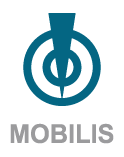ABOUT THE PROJECT
The ocean is announced as one of the major challenges of COP26 and the EOL 24000 platform is the ideal tool for the ocean’s health analysis.
Hydrosphere and Mobilis have been working closely to supply trustable data buoys for demanding customers as Plymouth Marine Laboratory (PML) for years. This year, the collaboration went even further with the birth of a new buoy model : the EOL 24000.
This buoy is the achievement of 20 years of intense work, development and research after the very first version of our EOL solution developed with the CNRS in Villefranche sur mer (France).
The organisation at the origin of this new buoy is SINTEF, one of Europe’s largest research organisation. The real-time datas are supplied to the OceanLab Observatory for research and industry as part of national research infrastructure, funded by the Research Council of Norway.





